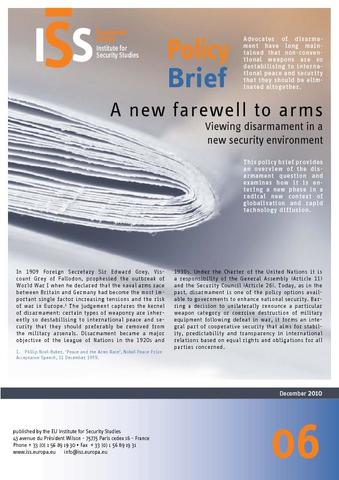You are here
A new farewell to arms: viewing disarmament in a new security environment

In 1909 Foreign Secretary Sir Edward Grey, Viscount Grey of Fallodon, prophesied the outbreak of World War I when he declared that the naval arms race between Britain and Germany had become the most important single factor increasing tensions and the risk of war in Europe. The judgement captures the kernel of disarmament: certain types of weaponry are inherently so destabilising to international peace and security that they should preferably be removed from the military arsenals. Disarmament became a major objective of the League of Nations in the 1920s and 1930s. Under the Charter of the United Nations it is a responsibility of the General Assembly (Article 11) and the Security Council (Article 26). Today, as in the past, disarmament is one of the policy options available to governments to enhance national security. Barring a decision to unilaterally renounce a particular weapon category or coercive destruction of military equipment following defeat in war, it forms an integral part of cooperative security that aims for stability, predictability and transparency in international relations based on equal rights and obligations for all parties concerned...